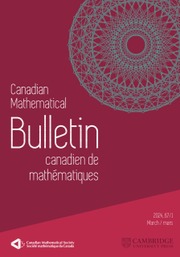No CrossRef data available.
Article contents
Outline of an Introduction to Mathematical Logic II
Published online by Cambridge University Press: 20 November 2018
Extract
Core share and HTML view are not available for this content. However, as you have access to this content, a full PDF is available via the ‘Save PDF’ action button.
It is the purpose of the calculus described in the preceding section (i) to yield as theorems all tautologies which can be formulated in terms of the given variables, and (ii) to yield no other formulae as theorems. We shall establish presently that these two conditions are indeed satisfied. However, there are questions of a more general character which can be solved both with regard to the present calculus and with regard to many other calculi, including some with a more comprehensive vocabulary.
Information
- Type
- Research Article
- Information
- Copyright
- Copyright © Canadian Mathematical Society 1958

